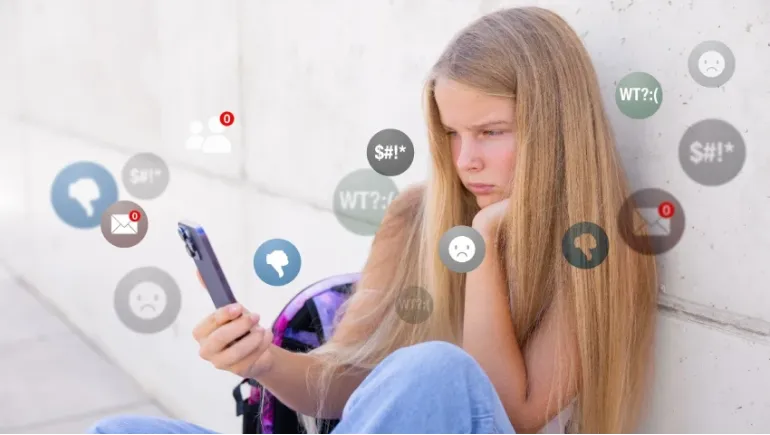
In today’s hyper-connected world, social media is as much a part of teenage life as school or family. From scrolling through Instagram reels to interacting on Snapchat or TikTok, teens in Bangladesh and worldwide are spending a significant portion of their day online. While these platforms offer entertainment, connection, and self-expression, they are increasingly linked to growing rates of teen anxiety. The glamorized lives, filtered images, constant comparison, and fear of missing out (FOMO) create a digital environment where mental well-being is constantly under threat.
One of the key drivers of social media-induced anxiety is the portrayal of a perfect life. Teens are bombarded with highlight reels of peers and influencers showing flawless skin, exotic vacations, luxurious lifestyles, and seemingly perfect relationships. This leads to unrealistic expectations and constant self-comparison, fostering a sense of inadequacy and low self-worth. For teens still developing their identity, the pressure to measure up can be overwhelming.
FOMO is a powerful psychological trigger, especially among adolescents. When a teen sees their friends hanging out without them or attending events they weren't invited to, it can lead to feelings of exclusion and rejection. This emotional rollercoaster not only increases anxiety but can also push teens to obsessively check their feeds to stay "in the loop," leading to poor sleep, academic distractions, and social withdrawal.
Unlike traditional bullying, which ends at the school gate, cyberbullying follows teens into their homes. Hurtful comments, shaming, and harassment on platforms like Facebook, Instagram, or WhatsApp can have severe emotional consequences. Victims often suffer in silence, fearing further humiliation if they speak out. The anonymity provided by the internet emboldens bullies, while victims are left feeling helpless, anxious, and depressed.
Social media platforms are engineered to be addictive. The infinite scroll, likes, notifications, and algorithm-driven content keep teens coming back for more. This addiction reduces face-to-face interaction and physical activity, disrupting sleep cycles and increasing isolation. Studies have shown that excessive screen time, especially before bed, is linked to higher levels of anxiety and sleep disturbances in teenagers.
For many teens, self-worth has become tied to online validation. A post that doesn’t get enough likes or shares can trigger anxiety and self-doubt. The pursuit of online popularity leads some to post provocative content, engage in risky behavior, or join viral challenges just for attention. This dependence on external validation creates emotional instability and constant pressure to perform.
While social media connects people globally, it can also create a sense of loneliness. Digital friendships often lack the depth and support of real-life interactions. Teens may have hundreds of online followers but still feel isolated. Over time, this digital loneliness contributes to social anxiety, making it harder for teens to build genuine offline relationships.
Platforms like Instagram and TikTok are saturated with edited photos and beauty filters. Teens, especially girls, are bombarded with images that conform to narrow beauty standards. This distorts body image and can lead to eating disorders, low self-esteem, and constant dissatisfaction with one's appearance. Boys, too, face pressure to appear muscular, successful, and dominant, fueling a silent epidemic of male body image anxiety.
Understanding the problem is the first step. Here are a few actionable tips for parents:
It's unrealistic to expect teens to completely avoid social media. Instead, help them use it mindfully:
While social media is not inherently evil, its design and culture can have unintended consequences for vulnerable teen minds. In Bangladesh, where digital penetration is growing rapidly, it's more crucial than ever to prioritize teen mental health. By creating awareness, promoting open communication, and fostering a balanced approach to technology, parents and teens can work together to minimize the negative effects of social media and reclaim emotional well-being.












Comments
There are no comments for this Article.